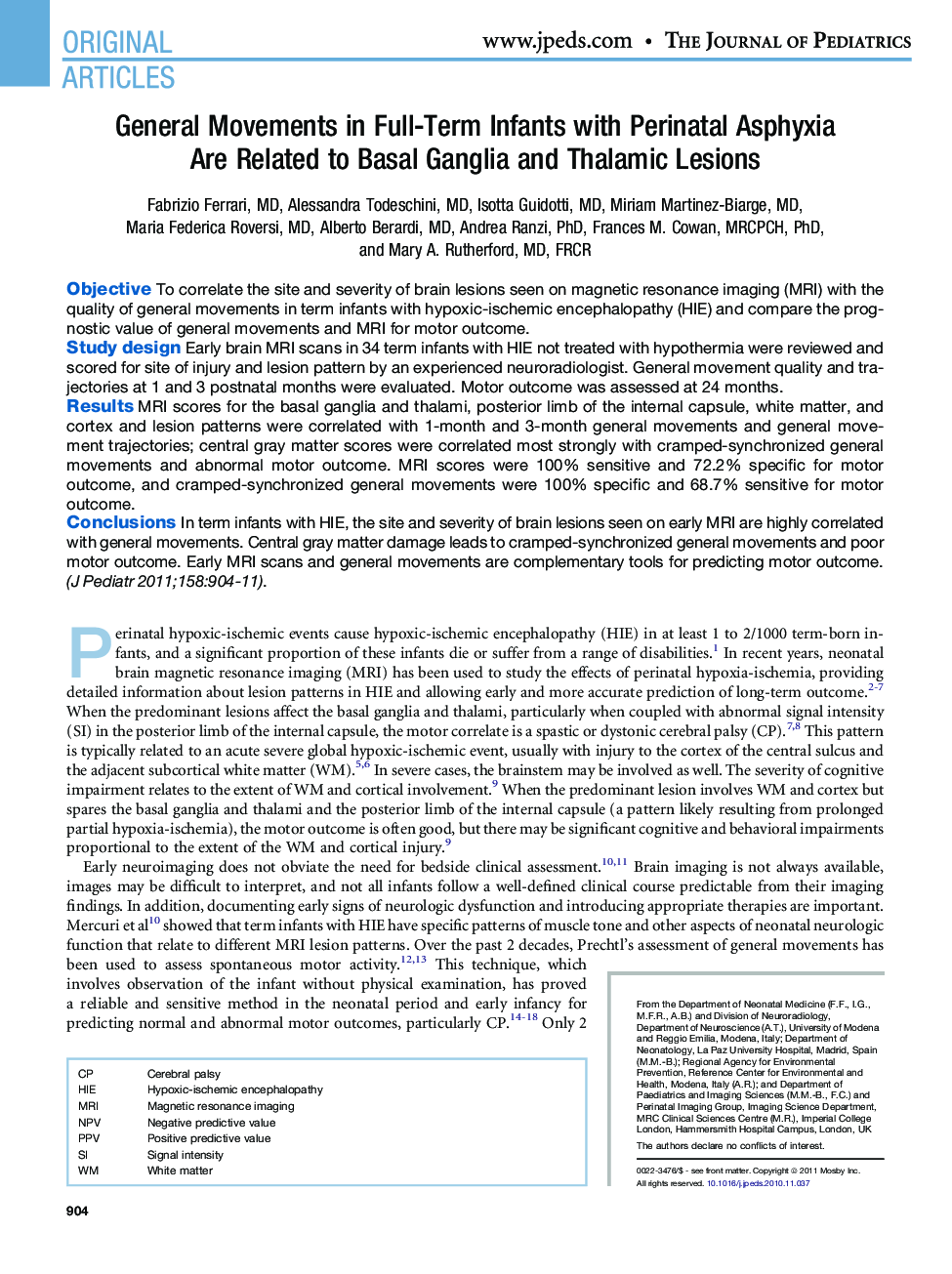| Article ID | Journal | Published Year | Pages | File Type |
|---|---|---|---|---|
| 4166556 | The Journal of Pediatrics | 2011 | 8 Pages |
ObjectiveTo correlate the site and severity of brain lesions seen on magnetic resonance imaging (MRI) with the quality of general movements in term infants with hypoxic-ischemic encephalopathy (HIE) and compare the prognostic value of general movements and MRI for motor outcome.Study designEarly brain MRI scans in 34 term infants with HIE not treated with hypothermia were reviewed and scored for site of injury and lesion pattern by an experienced neuroradiologist. General movement quality and trajectories at 1 and 3 postnatal months were evaluated. Motor outcome was assessed at 24 months.ResultsMRI scores for the basal ganglia and thalami, posterior limb of the internal capsule, white matter, and cortex and lesion patterns were correlated with 1-month and 3-month general movements and general movement trajectories; central gray matter scores were correlated most strongly with cramped-synchronized general movements and abnormal motor outcome. MRI scores were 100% sensitive and 72.2% specific for motor outcome, and cramped-synchronized general movements were 100% specific and 68.7% sensitive for motor outcome.ConclusionsIn term infants with HIE, the site and severity of brain lesions seen on early MRI are highly correlated with general movements. Central gray matter damage leads to cramped-synchronized general movements and poor motor outcome. Early MRI scans and general movements are complementary tools for predicting motor outcome.
